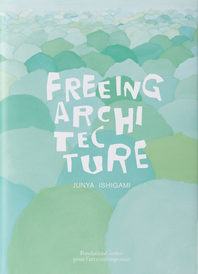Molo Softshelter
Product designs that address the health, safety, and dignity of those in need, including a shelter concept that easily adapts to many environments.
Three new humanitarian solutions that fill varied but important needs in developing countries and disaster zones.
Some people throw themselves into their work, but Molo Design literally moved into it. In order to test out a new temporary shelter made of paper, a studio assistant at the Vancouver-based multidisciplinary firm (a 2010 Architectural Record Design Vanguard winner) occupied a unit set up within the studio. An evolution of Molo's softwall product line of paper- and textile-based partitions, softshelter can be used for disaster relief or homeless shelters, as well as temporary voting booths, clinics, schools, or any situation where there is the need to set up a series of adjustable, private rooms.
To conduct the study, a mock-up was built in the Molo studio, and David Ullock, an assistant who conveniently needed a place to stay, moved in for about four months (a shower was installed for him in the studio for the experiment). An old clause in the studio's lease allowed for caretaker occupation, but for Todd MacAllen, a partner in the firm along with his wife, Stephanie Forsythe, the experiment would have been necessary even if the occupation weren't entirely legal. "Most of the work we do is based on experience," says MacAllen. Living with the shelter in the studio reinforced the importance of its ability to adjust to changing conditions, which, says MacAllen, was what the product was originally designed to do.
Using magnets and stretchable expanses of fire-retardant kraft paper, softshelter creates personal spaces within a larger shelter area, giving families a sense of privacy and community in the days following a disaster. While the shelter's paper remains high-quality and fire-retardant, it is a lighter weight than the original softwall, making it slightly more pliable, stretchable, and easier to transport. A few small details were added as a result of the study, including lighting, a Tyvek saddle to hang belongings, and a handle that can turn any wall into a door.
Late last year, Molo participated in an emergency-preparedness conference in Vancouver, where the product was well received. As it takes six to eight weeks to turn around a large order, MacAllen envisions the shelters can be part of a preparation program that could also be kept on hand for other community needs as they arise (it has not been used yet in a real disaster). He doesn't understand why some people are offended when humanitarian products are repurposed for other uses, such as exhibits or high-end retail. "I don't think we should be categorizing products and materials into whether they are high-end or low-end," says MacAllen. As for softshelter's potential, "we don't see it only as a response to disaster."



